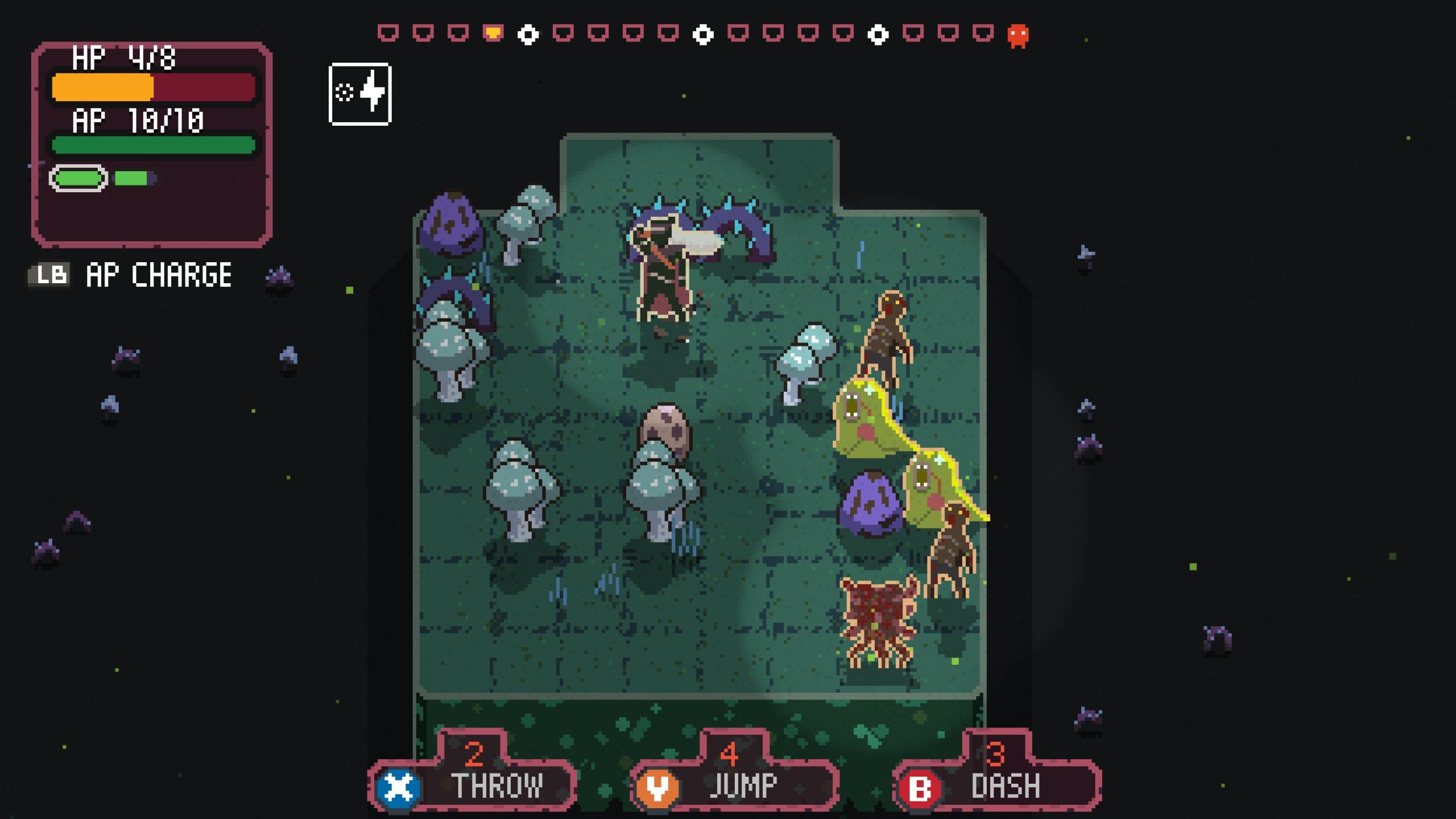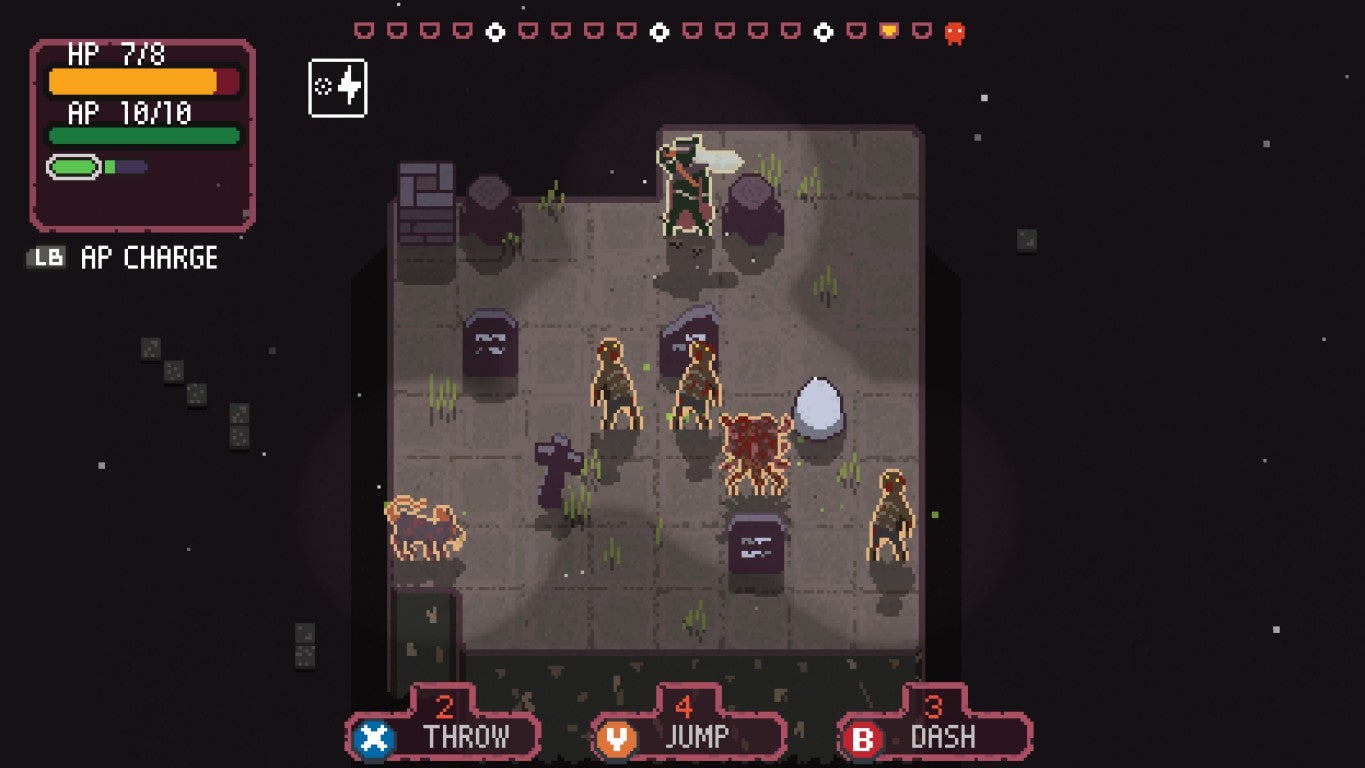There are no cards in the game, like in Fights in Tight Spaces, but you do have abilities. You can dash, jump, and throw your sword, assuming you have enough action points, and although they’re powerful moves, there are drawbacks to using each one. Throw your sword and you have to go retrieve it, for example, and dash carelessly and you’ll end up in trouble - you don’t get to choose how many spaces you go. Then again, you can dash through a line of enemies, which is incredibly satisfying. Like a samurai in a bamboo forest, you make your move and then watch as two halves of the enemies’ bodies slide apart. It’s also very satisfying to jump on someone’s head, killing them if they’re a weaker enemy, while pushing back and stunning enemies around you. Jump is great but it’s an expensive ability to use. These abilities can be modified, too - improved, cheapened - and you can layer on passive abilities that increase your survivability, such as regenerating AP after you’re hit. This is the character-building part, then, and you get to do it after every four battles, choosing between two abilities or a heal, normally. And generally, that’s it. Undergrave is quite small in terms of what it offers (it’s also a tiny 80MB). But good things do come in small packages. There’s a simplicity here that’s immediately appealing as within moments you’ve understood what to do and are playing. But of course, understanding how to do it well is something that requires studying enemy behaviour and getting a knack of what to use and when, and how to play for time when action points are recharging. It can be deceptively tough. I say “deceptively” because it’s presented in such a low-fi, adorable and sparing way - there’s barely any clutter or graphical extravagance - it doesn’t seem like it should be mean. Real character beams through. It’s almost as though the game were drawn by a young child because of the earnest naivety in how it looks. It’s charming. Underneath that, though, is sophistication. It’s in the tight layers of strategy that begin to emerge, and in the way the game moves and behaves. The sword feels nice to swing, the animations have a crunchy feeling to them. What I wonder about is how much staying power it has. I found it a bit one-note after an hour or so. I got to a boss and it was a bit underwhelming after an imaginative start, and I unlocked a new area that looked different and had new enemies, but they didn’t really make that much difference. What it lacks, for me, is another overlapping system to combine with what’s there and give that giddy sense of everything coming together on a great run. Think of the relics knitting with your deck in Slay the Spire, or the many modifications you can make to abilities in Hades. Undergrave can feel a bit thin in this area, a bit modest. But perhaps that’s the game - a game about steady precision and careful play rather than big, flashy moments. And that’s fine, that’s still engrossing, but it can also sometimes be a little dry.


